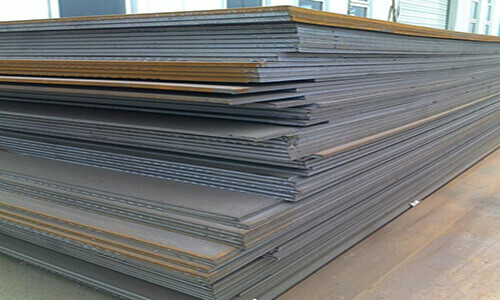12-14% Manganese Steel Plate Manufacturers
When it comes to engineering materials that need to withstand harsh conditions and extreme wear, 12-14% manganese steel plate, also known as Hadfield steel, stands out as a material of choice in various industries. Known for its high strength, durability, and resistance to impact and abrasion, this steel alloy has become a staple in many demanding applications. This blog delves into what makes 12-14% manganese steel plate so special and explores its key benefits and uses in different sectors.
What is 12-14% Manganese Steel?
Manganese steel, or Hadfield steel, is a high-carbon steel alloy that contains a significant percentage of manganese, typically between 12% and 14%. It was invented in 1882 by Robert Hadfield, and its distinctive properties come from the combination of carbon and manganese. Manganese acts as a powerful alloying element, improving toughness, hardness, and resistance to wear and tear.
This steel’s chemical composition typically includes:
12-14% Manganese: Provides hardness and impact resistance.
0.8-1.25% Carbon: Increases the hardness after heat treatment.
Iron: The balance of the alloy.
These proportions give the material its extraordinary strength, toughness, and resistance to abrasion, making it a preferred choice for industries that require heavy-duty materials capable of withstanding extreme environments.
Key Benefits of 12-14% Manganese Steel Plate
Excellent Wear Resistance: One of the defining characteristics of manganese steel is its remarkable resistance to wear and abrasion. When subjected to high-impact environments, the steel’s surface hardens, making it ideal for applications like mining equipment, crushers, and liners in heavy machinery. This makes it a perfect fit for industries such as construction, mining, and railroads.
High Toughness and Ductility: Unlike many other materials that become brittle under stress, 12-14% manganese steel is incredibly tough. It absorbs shock and impact without cracking, making it ideal for applications where high-impact forces are common. This toughness ensures a long service life in heavy machinery and tools, even in the toughest operating conditions.
Work-Hardening Properties: The most unique feature of Hadfield steel is its work-hardening ability. When the steel plate is exposed to high levels of impact or friction, the surface hardens, increasing its resistance to wear. This means that the material continues to perform effectively even in harsh working conditions, prolonging the life of components.
Cost-Effective: Though manganese steel is more expensive than standard steel alloys, its durability and long lifespan make it a cost-effective option in the long run. The reduced need for frequent repairs and replacements of worn parts can save businesses money over time.
Versatility in Manufacturing: 12-14% manganese steel can be easily machined into a variety of shapes and sizes. Its ability to be hardened after fabrication allows manufacturers to create complex shapes that retain toughness while offering high resistance to wear. This adaptability makes it suitable for custom components and specialized industrial uses.
